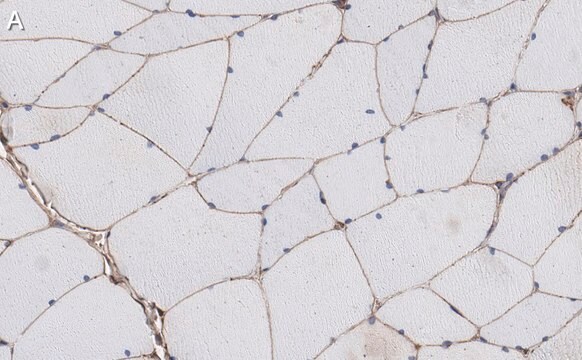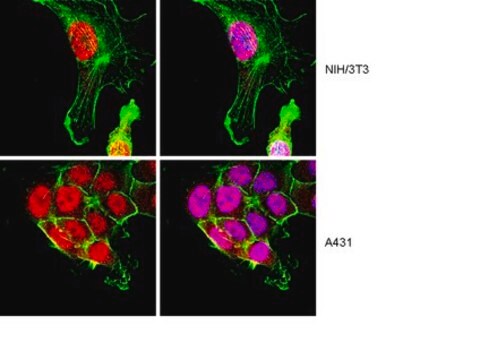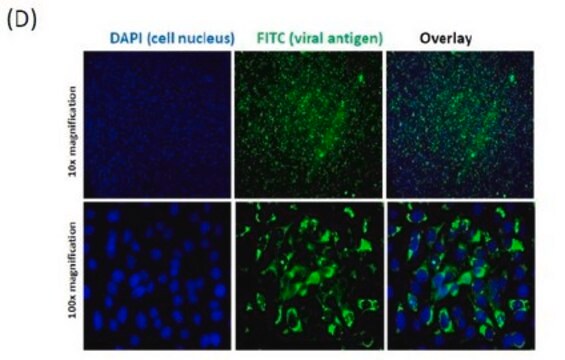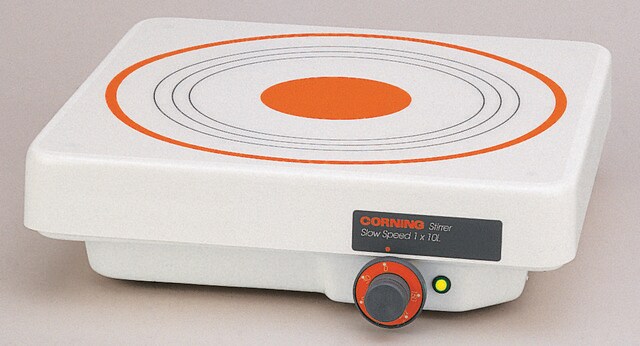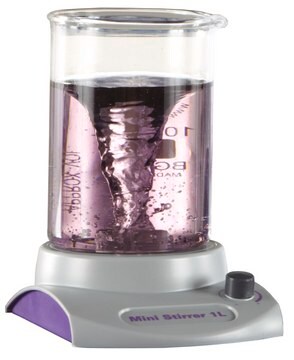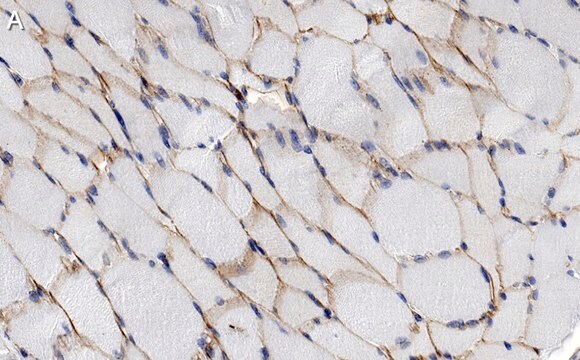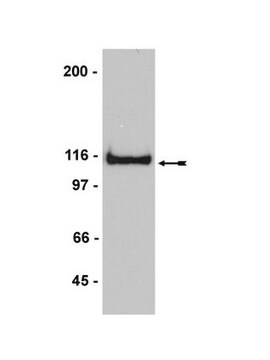05-593
Anti-α-Dystroglycan Antibody, clone IIH6C4
ascites fluid, clone IIH6C4, Upstate®
Sinônimo(s):
Dystrophin-associated glycoprotein 1, dystroglycan 1, dystroglycan 1 (dystrophin-associated glycoprotein 1), dystrophin-associated glycoprotein-1, LARGE-glycan, Large glycan
About This Item
IHC
WB
inhibition assay
immunohistochemistry: suitable
inhibition assay: suitable
western blot: suitable
Produtos recomendados
fonte biológica
mouse
forma do anticorpo
ascites fluid
clone
IIH6C4, monoclonal
reatividade de espécies
human, mouse, canine, rat, guinea pig, rabbit
fabricante/nome comercial
Upstate®
técnica(s)
immunofluorescence: suitable
immunohistochemistry: suitable
inhibition assay: suitable
western blot: suitable
Isotipo
IgM
nº de adesão NCBI
nº de adesão UniProt
Condições de expedição
dry ice
modificação pós-traducional do alvo
unmodified
Informações sobre genes
human ... DAG1(1605)
Descrição geral
Especificidade
Imunogênio
Aplicação
Western Blot Analysis: A previous lot of this antibody was used on mouse muscle tissue lysate 3 months after shRNA induction, and in littermate controls (ctrl) and LARGE-null negative control (myd) (Goddeeris, M., et al. 2013, Nature).
Immunofluorescence: A previous lot of this antibody was used to detect α-Dystroglycan /LARGE-glycan in mouse muscle tissue (Goddeeris, M., et al. 2013, Nature).
Metabolism
Muscle Physiology
Qualidade
Western Blot Analysis:
A 1:1000-1:2000 dilution of this lot detected α-Dystroglycan/LARGE-glycan in rabbit skeletal muscle.
Note: The use of WGA purified protein results in significantly cleaner blots and immunoprecipitates.
Post-translational modification of dystroglycan causes band broadening.
Descrição-alvo
forma física
Liquid at -20ºC.
Armazenamento e estabilidade
Nota de análise
Rabbit skeletal muscle lysate.
Outras notas
Informações legais
Exoneração de responsabilidade
recomendado
Código de classe de armazenamento
12 - Non Combustible Liquids
Classe de risco de água (WGK)
WGK 2
Ponto de fulgor (°F)
Not applicable
Ponto de fulgor (°C)
Not applicable
Certificados de análise (COA)
Busque Certificados de análise (COA) digitando o Número do Lote do produto. Os números de lote e remessa podem ser encontrados no rótulo de um produto após a palavra “Lot” ou “Batch”.
Já possui este produto?
Encontre a documentação dos produtos que você adquiriu recentemente na biblioteca de documentos.
Nossa equipe de cientistas tem experiência em todas as áreas de pesquisa, incluindo Life Sciences, ciência de materiais, síntese química, cromatografia, química analítica e muitas outras.
Entre em contato com a assistência técnica